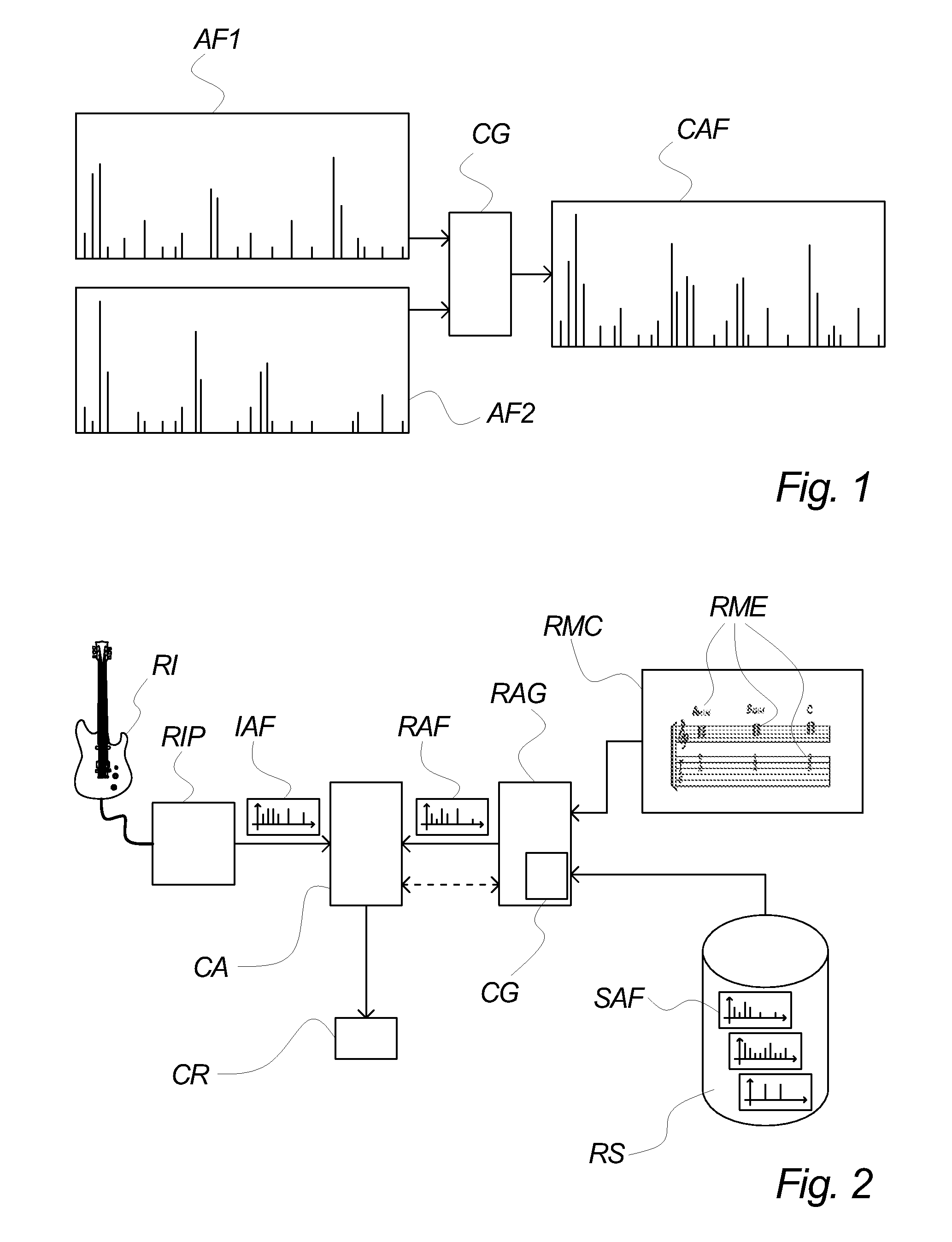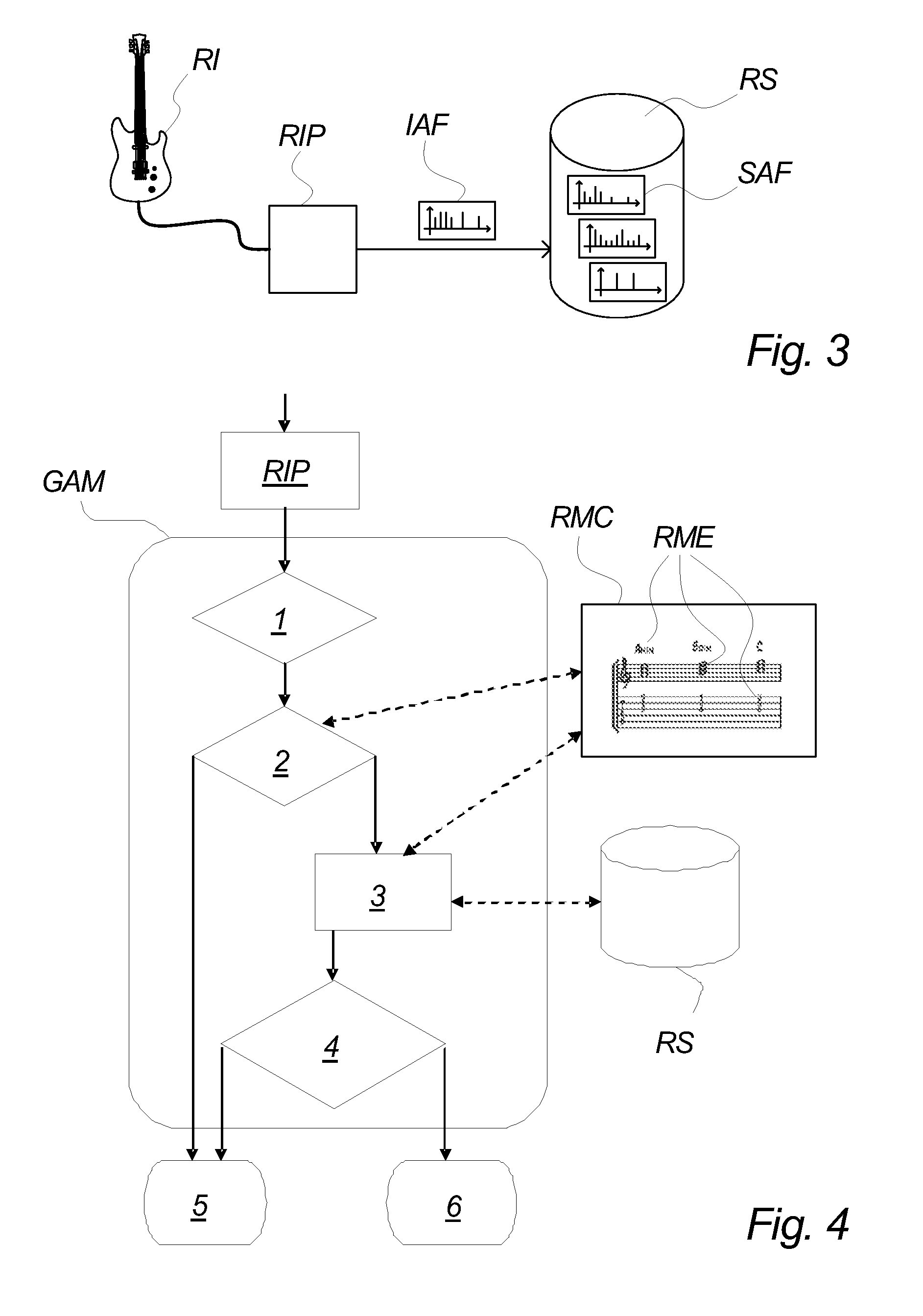Generative Audio Matching Game System
a game system and audio signal technology, applied in the field of real electric or acoustic instrument audio signal recognition, can solve the problems of not being able to play real music scores, human motor function skills of handling actual real music instruments, and games that will not teach how to play real songs, so as to facilitate the learning of players and promote the educational aspects of game systems
- Summary
- Abstract
- Description
- Claims
- Application Information
AI Technical Summary
Benefits of technology
Problems solved by technology
Method used
Image
Examples
Embodiment Construction
[0119]As mentioned, chord recognition is considered a very hard problem. There is a vast body of research devoted to the problem, which tends to try to solve the problem by extracting frequencies or pitches from the input signal.
[0120]A preferred embodiment of the present invention builds upon a new system and method that does not attempt to find frequencies or pitch information in audio data and does not attempt to extract note information from chords. Instead of extracting pitch from an input audio signal, relevant audio signals are generated from known or previously learned reference signals and these signals can be compared to the input audio signal.
[0121]More specifically, generative audio matching according to a preferred embodiment of the present invention works as illustrated in FIG. 2, by matching incoming audio fragments IAF of a real instrument RI against learned and / or generated reference audio fragments RAF, each of which are simply a small carefully chosen piece of an ...
PUM
 Login to View More
Login to View More Abstract
Description
Claims
Application Information
 Login to View More
Login to View More - R&D
- Intellectual Property
- Life Sciences
- Materials
- Tech Scout
- Unparalleled Data Quality
- Higher Quality Content
- 60% Fewer Hallucinations
Browse by: Latest US Patents, China's latest patents, Technical Efficacy Thesaurus, Application Domain, Technology Topic, Popular Technical Reports.
© 2025 PatSnap. All rights reserved.Legal|Privacy policy|Modern Slavery Act Transparency Statement|Sitemap|About US| Contact US: help@patsnap.com



